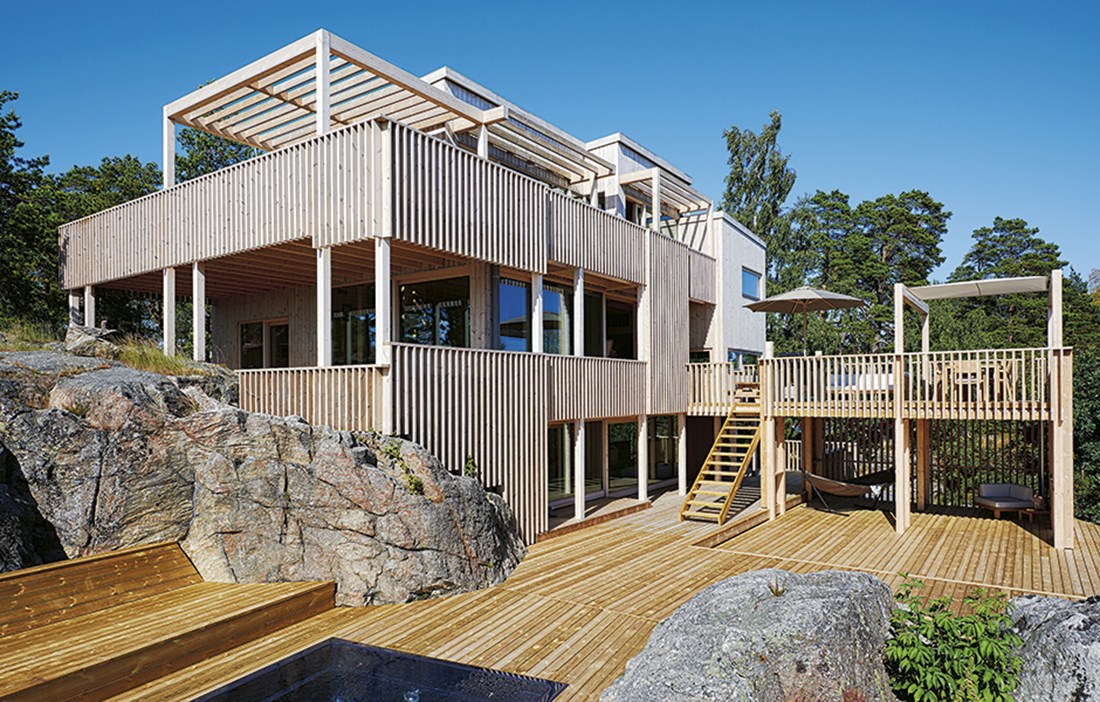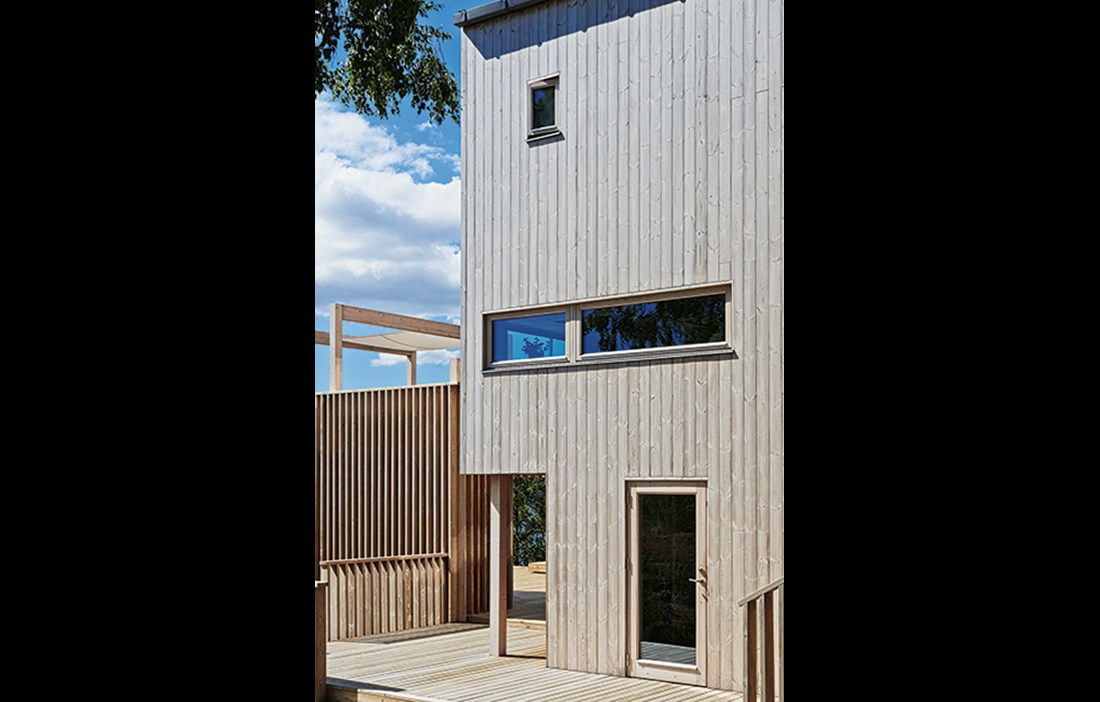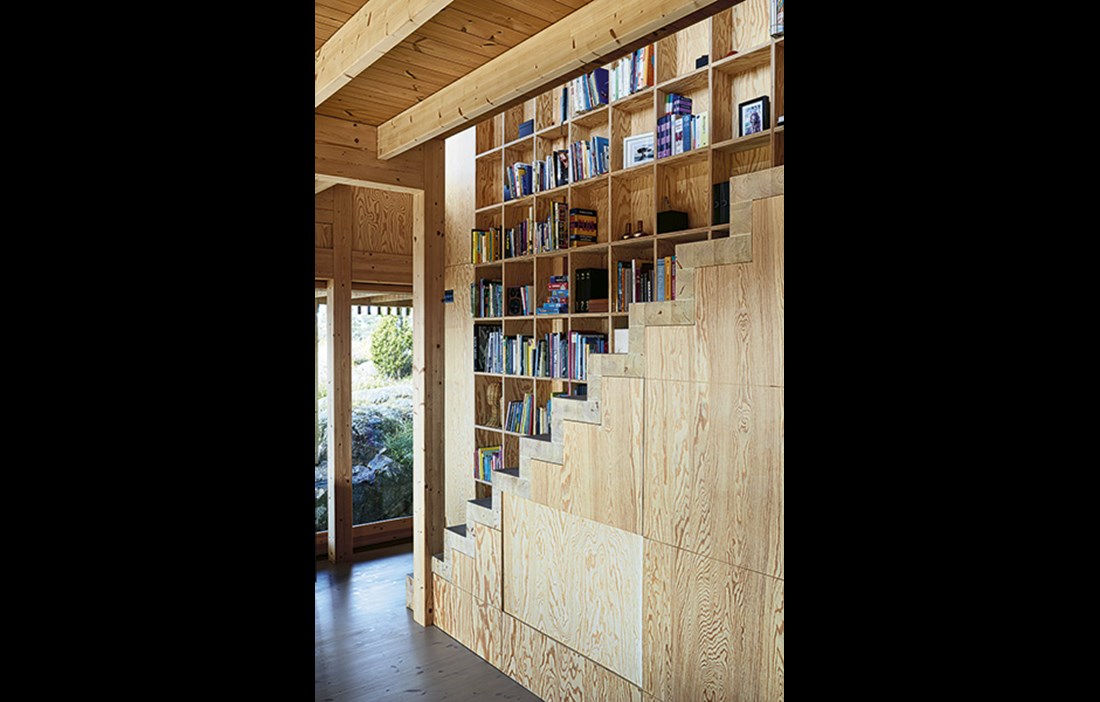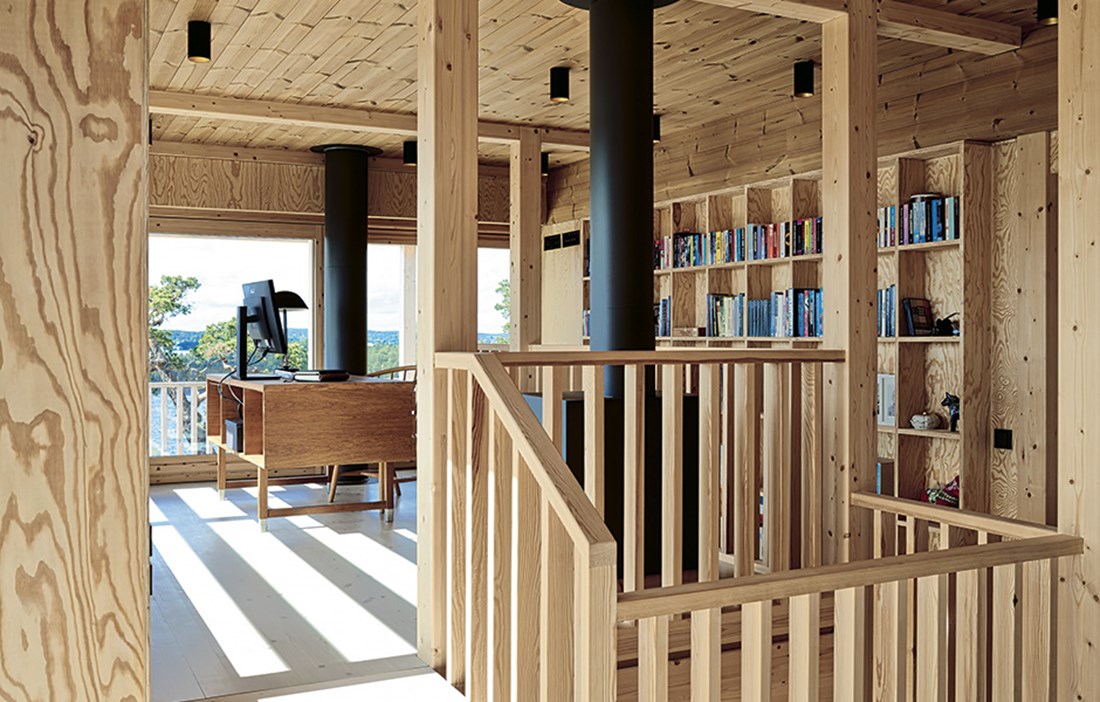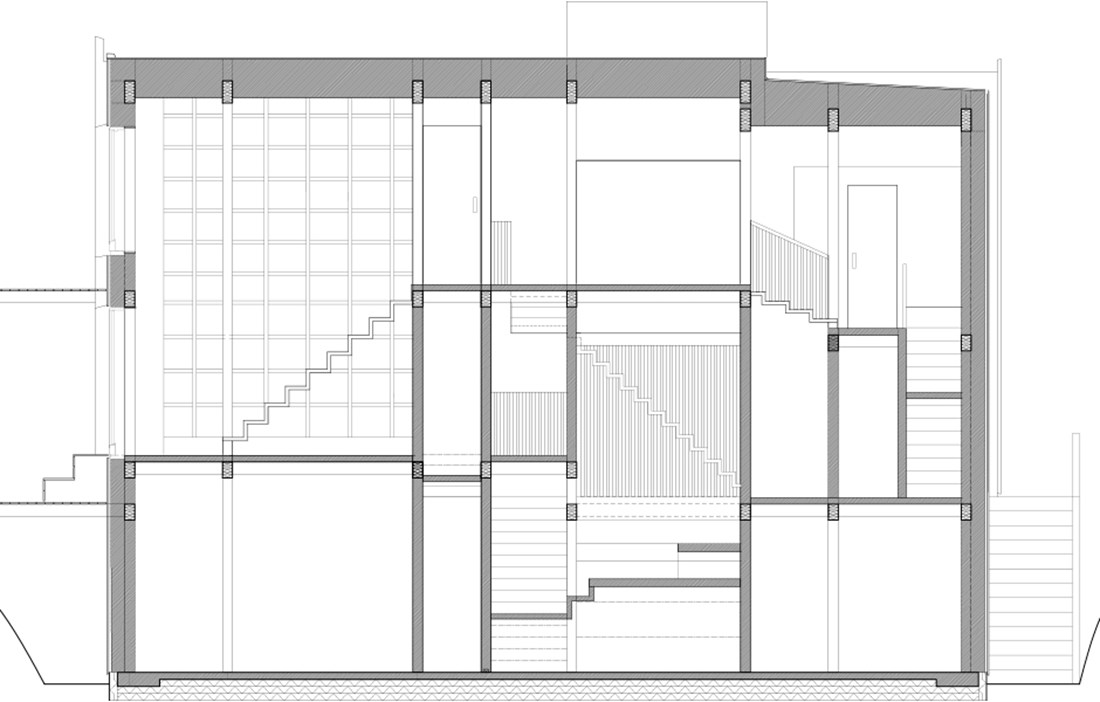A DRAMATIC CONVERSATION was life-changing for Klas and Astrid Holm, when they were offered a plot to purchase on Älgö outside Stockholm. On the plot stood an old wreck of a building.
“The house was so draughty that we could feel the wind in our hair as we lay in bed,” says Klas Holm.
The whole family lived in the old house for a year, giving them time to acclimatise to the site and sketch out their dream house. Something they encourage everyone to do:
“Think about it, and give the process time, so you really find the solutions you want to live with,” suggests Astrid Holm.
Now Villa Moelven is finally completed, and enjoys fantastic views of Erstaviken.
“When we decided to build a wooden house, I contacted Moelven and asked if they wanted to be involved. The house had to be as close to 100% wood as possible, and it had to be spectacular. They had the range of products we were after, including glulam and other timber. They provided their expertise, and in return I was able to pass on information and inspiration about building in wood,” explains Klas Holm.
From the outset, the couple knew they wanted to work with the architectural studio Widjedal Racki.
“In terms of the whole experience, this is a very special house, where the clients have really put their heart and soul into the project. Doing something with absolute conviction makes it better. The end result is uniquely right for them,” says Håkan Widjedal.
Håkan Widjedal and Ola Keijer often come back to the clients’ keywords – labyrinthine, narrow, surprising, tropical and Nordic. The theme for the house was to maximise the experience. 18th-century Italian artist and architect Giovanni Battista Piranesi was a clear influence. Piranesi is known for having designed large prisons and the Santa Maria del Priorato church in Rome.
THE ARCHITECTS WANTED TO EXPLORE what happens when you break down the conventional rooms. How do you handle what is left? If you erase the boundaries, the building, rooms and interiors begin to merge into one. At same time, they wanted to root the design in the plot, with its many levels.
“The topography of the plot involved several different levels, and we decided to embrace this and create many levels internally as well,” relates Klas Holm.
“The architects had to go back to the drawing board several times, because we wanted something spectacular, not just good-looking. Everything had to be taken as far as it could go. Two staircases weren’t enough – we wanted eight. Three levels were no good – we wanted 16. And yet it’s by no means a crazy house,” he continues.
The Holm family wanted to build their house in Nordic wood. They chose spruce glulam, heat-treated pine for the facade and ceilings, pine plywood and solid pine flooring.
“The idea is that it would feel like we’d sourced the materials from just behind the house,” says Klas Holm. “I wanted to create a smart house with a little extra thought, a fully ecological building with good energy efficiency.”
Glulam pays a very prominent role in the feel of the house, since the design has a visible structural frame. Every joist, every beam is visible. However, the exposed frame accentuates the labyrinthine feel, creating rooms within rooms and emphasising functions – defining the kitchen, for example. It also contributes to the atmosphere and lends warmth to the house.
Johan Åhlén, CEO of Moelven Töreboda, who managed delivery of the structural frame, found it incredible to be able to test a wide variety of products in exciting new areas of use.
“When a trailblazer like Klas Holm comes up with a new take on what can be achieved with wood, that shows our products in the best of lights. There’s no doubt exposure like this helps boost the use of wood,” says Johan Åhlén.
Moelven Töreboda’s solution for the posts included a pre-fitted threaded rod, so that they just had to be slotted into the precision-drilled holes in the groundslab. An oil-hardened masonite sheet at the base of the posts stops any moisture transmission from the foundations.
“It has been really rewarding providing design support and technical solutions for this build. The whole house is based around environmental choices, which is fascinating.”
The initial intention was for the posts or beams to have CNC milled hidden fixings and pegs. Following discussions with Moelven Töreboda, the choice was changed to specialist screws from SFS Intec, which provided a convenient and elegant solution for screwing together the glulam components. For this, the architects needed to draw cross-sections for all the joints in the frame.
“It’s like a steel structure, but instead of welding steel joists together, we’ve screwed together glulam beams. This opens up whole new opportunities for building in wood,” says Håkan Widjedal.
THE COMPLEXITY OF THE DESIGN did, however, make it impossible to draw out or even resolve all the details. All the 3-D drawings and models that Ola Keijer at the architectural firm produced were a great help. They became handy tools when the architect, client and carpenter were on site, discussing how different solutions were going to be applied.
“We’ve handled all the joints together on site, putting together a list and considering how things look,” relates Klas Holm.
One challenge lay in finding as good a solution as possible for the remaining parts of the house. The foundations are a cast slab with L-sections of polystyrene foam. In contrast to ordinary polystyrene foam, the polystyrene used here is blended with graphite. This makes it denser, which reduces heat loss by 30–35% compared with an ordinary groundslab.
The 350 millimetre thick walls which, thanks to the internal structural frame, only serve as a shell, were built using lightweight I-beams, OSB panels with thin flanges. This has largely eliminated any thermal bridges. The walls are filled with a cellulose insulation made from recycled newspaper. It took only two days to inject the insulation into the 350 square metre building.
A breathable membrane with a diffusion-open design was used internally, with a diffusion-open vapour control membrane beneath the facade cladding. These act like Gore-Tex, drawing moisture out of the house, but not letting any moisture in. A diffusion-open wooden structure with cellulose insulation seeks to even out humidity levels between the outdoor air and indoor air. In practice, the aim is for the house to have a relative moisture content of about 50% all year round.
The house is heated using solar panels that deliver all the hot water – tap water, underfloor heating and the pool – for six months of the year. For the remaining time, the system is supplemented with ground source heating. Input and exhaust air is controlled using a heat exchange system. By chance, the air intake was placed beneath the terrace on the north face of the house, which means that even on hot summer days, the system provides cool air without the need for additional cooling.
All the floors have impact sound insulation, but no other acoustic measures have been taken.
This is not ideal, with sound clearly carrying, but there are so many nooks and crannies that this will not be a problem between the rooms.
“If you want a bit of peace and privacy, you can move further away in the labyrinth,” says Håkan Widjedal.
THE CEILING HEIGHTS also vary considerably in the house, from over five metres in the hall to the lowest space – a 600 millimetre high secret room in one of the children’s bedrooms. The kitchen is just over two metres high, which was a challenge as Klas Holm is 190 centimetres tall. However, the kitchen opens up and out into the dining room and living room, so the house never feels claustrophobic.
“The level differences create an excessive number of staircases, but they contribute to the labyrinthine nature, the architectural feel and also the spatial dynamic. The many staircases are important in creating the whole experience, and it means you can always choose to go a different way,” Håkan Widjedal points out.
Before we part, Klas Holm stresses that the house makes a real impression:
“I see the way people come and visit and then they want to just go home and build their own wooden house.”
Text David Valldeby

